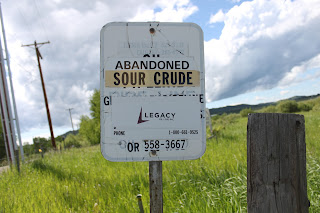CFL’s Dirty Little Secret
B. McPherson
Compact fluorescent light bulbs are in most people’s homes
in Europe and Canada. Governments mandated the switch from conventional
incandescent light bulbs to the CFLs in order to save electricity. Incandescent
bulbs are no longer available for sale.
There was a bit of a hullaballoo about infringement on
choice, but generally the old style hot bulbs were consigned to history. Some
people bought lifetime supplies of their favorite hot bulbs. They were
generally regarded as slightly touched. Perhaps it was ourselves who were.
Environmentalists pointed out that the CFLs contained
mercury, a toxic heavy metal. The safe disposal of the new bulbs was going to
be a problem. We were assured that there was so little mercury in them that it
would never be a problem. Your old light bulbs main hazard was the possibility
of broken glass, so wrapping in newspaper and placing in the garbage was
sufficient.
In the province where I live, BC, the electrical company
advises consumers to take their burnt out bulbs to the nearest recycling
centre. For me that is about a half hour drive away. But as I check some of the
small towns outside of the urban centres, the recycle centres are as scarce as
hen’s teeth. You can guess where the burnt out bulbs will go. Public Health
England has stated that the amount of mercury released in an accidental break
won’t hurt you but they do have specific directions about the clean-up
procedure, including ventilation of the room for 15 minutes.
Now word is leaking out about the ultraviolet radiation that
these curly bulbs are emitting. The fixtures heat slightly, which excites the
argon, mercury vapour mixture inside which generates ultraviolet light. This
radiation hits the coating on the inside of the bulb and it fluoresces making
light. Unfortunately some of the ultraviolet energy can leak out of the
fixture.
Did you ever think that your reading lamp would contribute
to wrinkles, brown spots, skin cancers, seizures, migraines, blindness…? Of
course not. You were saving electricity. Ultra-violet light is linked to all
these afflictions.
While governments are quick to assure us that CFLs are safe,
our Canadian government has conducted tests on them and advises to keep them at
least 30 cm away from your body and to use for no longer than three consecutive
hours.
The following is from the Daily Mail UK
Anne Vick, the communications director of
Lighting Europe, the industry association representing leading lighting
manufacturers, maintains 'there is no risk from ultra- violet light exposure
emitted by CFLs as their UVA and UVB rays are well within the limits that
guarantee consumer protection'.
She adds: 'European scientific experts have not found any health impact from UV rays emitted by energy-saving bulbs in normal conditions.
She adds: 'European scientific experts have not found any health impact from UV rays emitted by energy-saving bulbs in normal conditions.
Sources:


Comments
Post a Comment